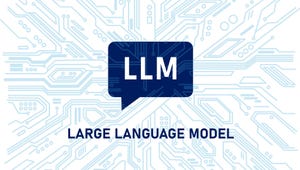Mideast & Africa News

Blinken: Digital Solidarity Is 'North Star' for US Policy
Blinken: Digital Solidarity Is 'North Star' for US Policy
The four goals of the US International Cyberspace and Digital Policy Strategy are to advance economic prosperity; enhance security and combat cybercrime; promote human rights, democracy, and the rule of law; and address other transnational challenges.
Latest Commentary
Application Security Evangelist, Mend.io
Global Director, Cybersecurity Architecture and Engineering, Estee Lauder Companies
Co-Founder & CEO, Eureka Security
Deep Reading
See More Dark Reading ResearchThe four goals of the US International Cyberspace and Digital Policy Strategy are to advance economic prosperity; enhance security and combat cybercrime; promote human rights, democracy, and the rule of law; and address other transnational challenges.
Feeling creative? Submit your caption and our panel of experts will reward the winner with a $25 Amazon gift card.
As the social media giant celebrates its two-decade anniversary, privacy experts reflect on how it changed the way the world shares information.
Cybersecurity Features In-Depth: On security strategy, latest trends, and people to know. Brought to you by Mandiant.
Security Technology: Featuring news, news analysis, and commentary on the latest technology trends.
The new company will focus on cybersecurity services as a top 10 managed security service provider, but must expand outside the low-margin management of security into detection and response.
Microsoft is previewing new AI and machine learning capabilities in Defender XDR that will help detect and block malicious OAuth applications.
The startup's new identity and access management platform uncovers poorly monitored service accounts and secures them from abuse.
The growing amount of surveillance technology being deployed in the country is concerning due to Indonesia's increasing blows to citizens' civil rights.
A recent campaign targeting Middle Eastern government organizations plays standard detection tools like a fiddle. With cyberattackers getting more creative, defenders must start keeping pace.
Some customers found that they had the ability to cancel a stranger's flight to another country after opening the app, which was showing other individuals' flight details.
Breaking cybersecurity news, news analysis, commentary, and other content from around the world.
Partner Perspectives
More Partner PerspectivesPress Releases
See allShining a light in the dark: observability and security, a SANS profile
ESG E-Book: Taking a Holistic Approach to Securing Cloud-Native Application Development
The Cloud Threat Landscape: Security learnings from analyzing 500+ cloud environments
Application Security's New Mandate in a DevOps World
The State of Incident Response
Black Hat USA - August 3-8 - Learn More
August 3, 2024Cybersecurity's Hottest New Technologies: What You Need To Know
March 21, 2024
Key Findings from the State of AppSec Report 2024
May 7, 2024Is AI Identifying Threats to Your Network?
May 14, 2024Where and Why Threat Intelligence Makes Sense for Your Enterprise Security Strategy
May 15, 2024Safeguarding Political Campaigns: Defending Against Mass Phishing Attacks
May 16, 2024Why Effective Asset Management is Critical to Enterprise Cybersecurity
May 21, 2024








.jpg?width=100&auto=webp&quality=80&disable=upscale)



























